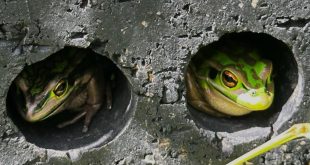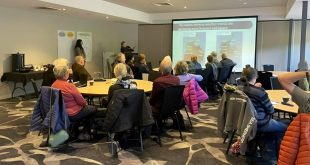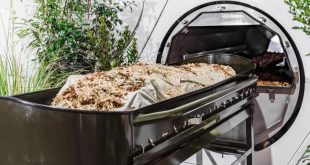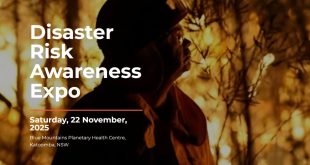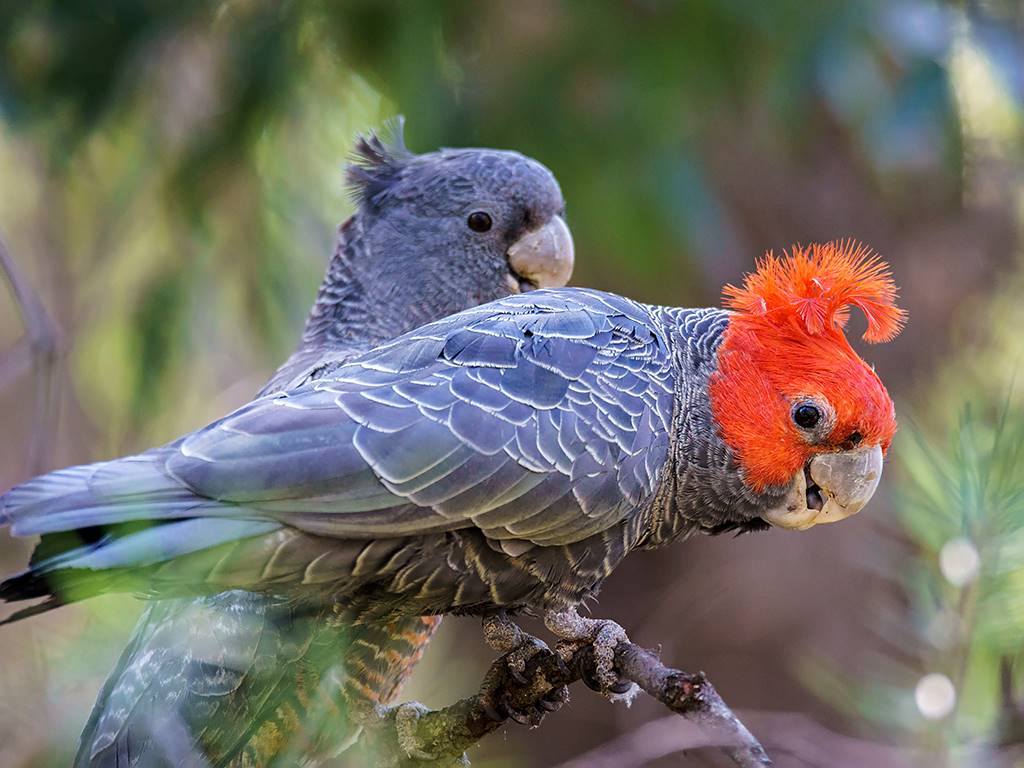
Gang Gang Cockatoos are now listed as a vulnerable species. (Photo: David Cook via Flickr, Creative Commons license.)
By Tracie McMahon
Threatened Species Day commemorates the day of the death of the last Tasmanian Tiger. It is a reminder of the vulnerability of our native flora and fauna and that we need to act before it is too late. In Lithgow, the once common ‘squeaky door’ call of the Gang Gang Cockatoo has become a rarity. On Threatened Species Day 2023, Lithgow and Oberon Landcare volunteers banded together at Farmers Creek to see what could be done to address their decline.
Key Points:
- The Black Summer bushfires are estimated to have impacted 3 billion native animals. Species such as Gang Gang Cockatoos are now listed as vulnerable.
- Planting trees along the creek lines of Lithgow replaces their habitat as well as stabilising banks to minimise the impacts of flood.
- Landcare hosts regular events throughout the Lithgow Area, providing all tools, equipment and training. There is no prior knowledge or skill requirement, and all ages are welcome.
Only ten years ago I would sit on my verandah in Little Hartley watching flocks of Gang Gangs soar overhead. My mother-in-law said they signalled the coming rain, but it’s been a long time since I’ve seen a flock and we’ve had a lot of rain!
National Threatened Species Day marks a ‘milestone’ day for Australia: the death of the last Tasmanian Tiger on 7 September 1936. The day was established in 1996 by WWF Australia and the Australian Government’s Natural Heritage Trust to “shine a spotlight on all the Australian native animal and plant species that are facing similar fates to that of the Tasmanian Tiger.” WWF Australia indicates that in 2023 there are over 565 native species currently listed as threatened. The Black Summer bushfires impacted nearly 3 billion animals. After the 19/20 fires the Gang Gang Cockatoo was rescheduled as ‘vulnerable’.
To be listed as vulnerable under the Environment Protection and Biodiversity Conservation Act 1999, one of the following indicators must be exhibited: a substantial reduction in numbers, a limited geographic distribution, a limited number of mature individuals, and evidence suggesting it will continue to decline, or the probability of extinction in the wild is at least 10% in the medium-term.
There are many that would throw their hands in the air, considering that the fire damage was too big and the loss irreversible, but there are others that believe that something can be done and will roll up their sleeves to do it. Members of the Lithgow and Oberon Landcare Association fall into this category. On Threatened Species Day they invited volunteers to join them to plant habitat on Farmers Creek near Geordie Street. Over 20 locals responded.
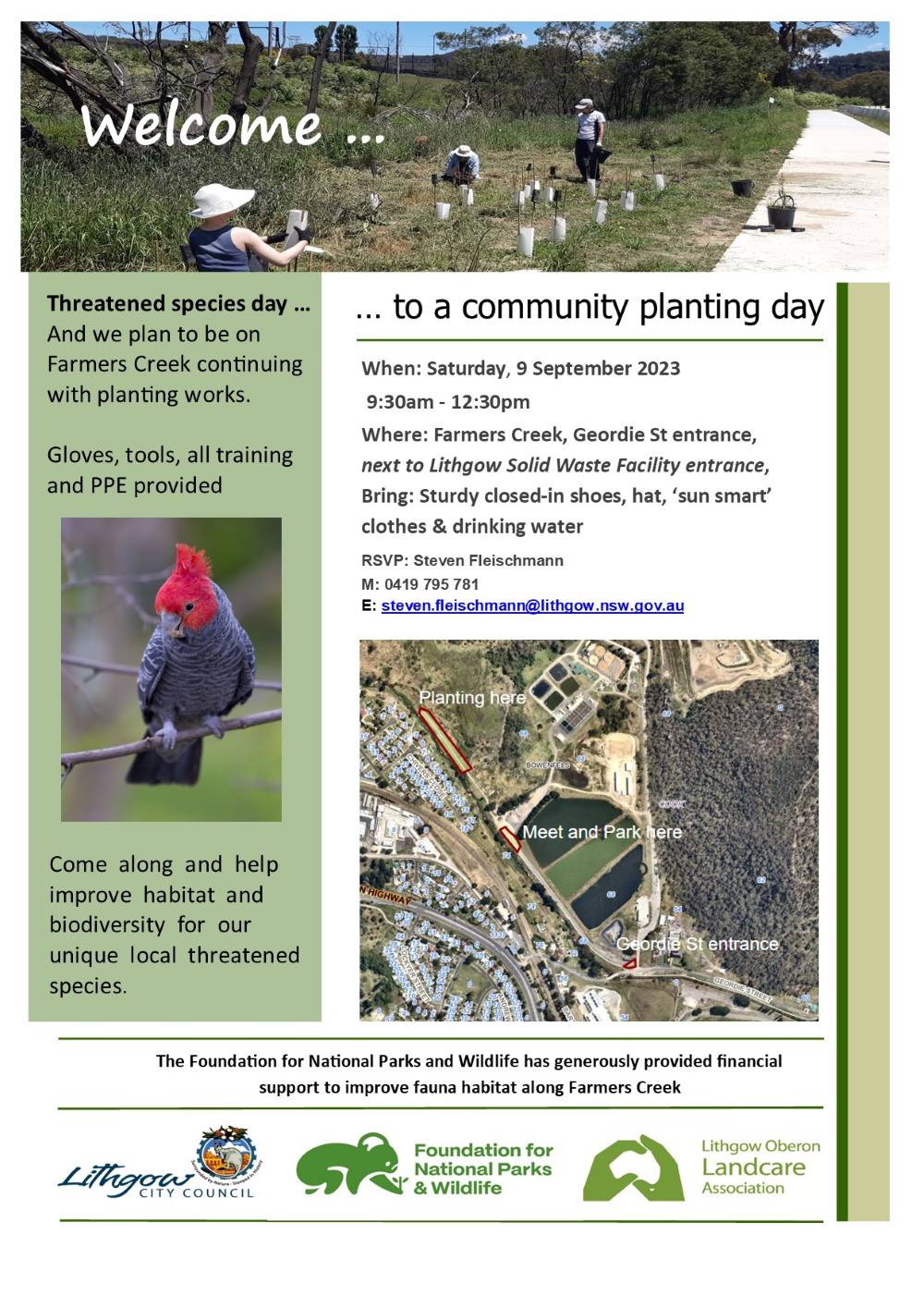
Poster for Threatened Species Day (LOLA supplied)
This section is now frequented by cyclists and walkers, enjoying the Farmers Creek cycleway that runs alongside the Creek. In 2017, when the Farmers Creek Precinct Masterplan was adopted by Lithgow City Council, it was described as degraded and prone to weed infestation. Today it is recovering from the extensive rain of 2022, including slippage of the natural banks, and regrowth of both natural grasses and weeds.
There are some benefits to all that soil and water movement. My self-elected task as a volunteer on Threatened Species Day is digging holes. Clumps of soft alluvial soil lift easily with a single swing of a mattock, revealing earthworms and a network of roots and fungal webs, ready to give the plantings a great start to life.

Farmers Creek Lithgow. Source Farmers Creek Precinct Masterplan. The Masterplan can be found here
The 2017 Farmers Creek Precinct Masterplan envisages redeveloping the area in three stages at a cost of over $9 million. The Masterplan suggests it will take close to two decades for Farmers Creek to realise its “enormous potential as a recreation and environmental asset”. Every plant inches this rehabilitation forward and it is inspiring to meet so many people willing to assist.
Volunteers include tiny tots learning how to hold a trowel to those with years of experience and their favourite trowel. Age, skill, strength and knowledge vary considerably, but all are welcome and there is much to do. Planting each individual seedling involves digging a hole, clearing surrounding vegetation, planting, assembling a tree guard, staking the tree guard around the new plant, gathering water from the creek, and finally watering the plant. Phew!
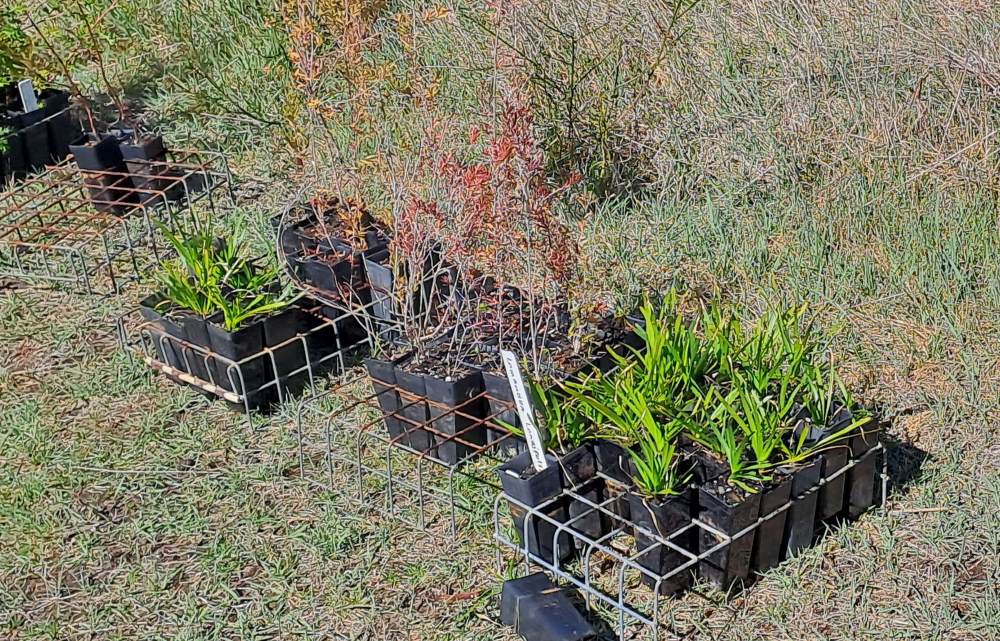
Species planted to create habitat for native fauna.
Before we begin, Steve Fleischmann, Landcare Coordinator, explains that the “planting is aimed at joining fragmented pockets of remnant bushland to create continuous stretches of riparian vegetation.” Riparian zones are those areas of vegetation alongside rivers or waterways that help protect the waterway. Plants have been chosen specifically for the vulnerable Gang Gang Cockatoo, but also to create the layers necessary for the health of the entire ecosystem.
Eucalyptus viminalis is a locally endemic tree species Gang Gangs have been seen in, while Leptospermum (tea tree) and Acacia (wattle) are roosting and food trees for several birds, including Gang Gangs. Lomandra longifolia helps to retain the banks and creates a ground level layering and food source for pollinators.
As we work, I ask my fellow volunteers what encouraged them to join in. Malcolm Reid, a Hartley resident and relative newcomer to the area, says it is an opportunity to learn and meet new people, while others see it as a commitment to the future.
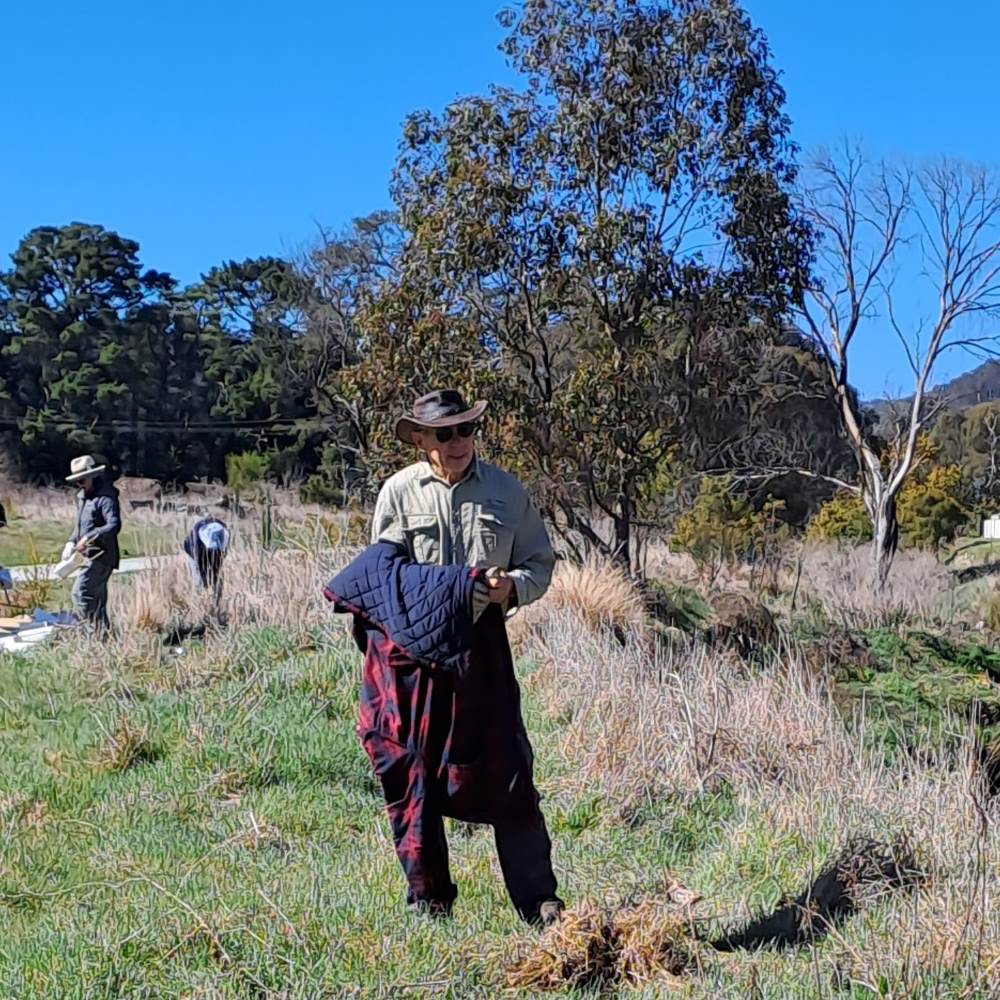
Malcolm Reid, nicely warmed up after digging holes.
Lithgow High School Teacher Erika Marlin mentions her desire to set an example for students. It is Erika’s first event, and she says: “she wouldn’t ask her students to do anything she wouldn’t do herself.” As we speak, students Malakai and Malik Houzaifi turn up to lend a hand.
Others like Christine Bailey, author of a new book on the Purple Copper Butterfly, know intimately the value of habitat to the unique flora and flora of Lithgow, and are keen to ensure it is in abundance. As I look around, I comment that it is hard to imagine the tubestock we have planted morphing into shady trees, scent-laden shrubs and thick grasses, but a fellow volunteer pops his head up to remind me: “the true meaning of life is to plant trees under whose shade you do not expect to sit.”
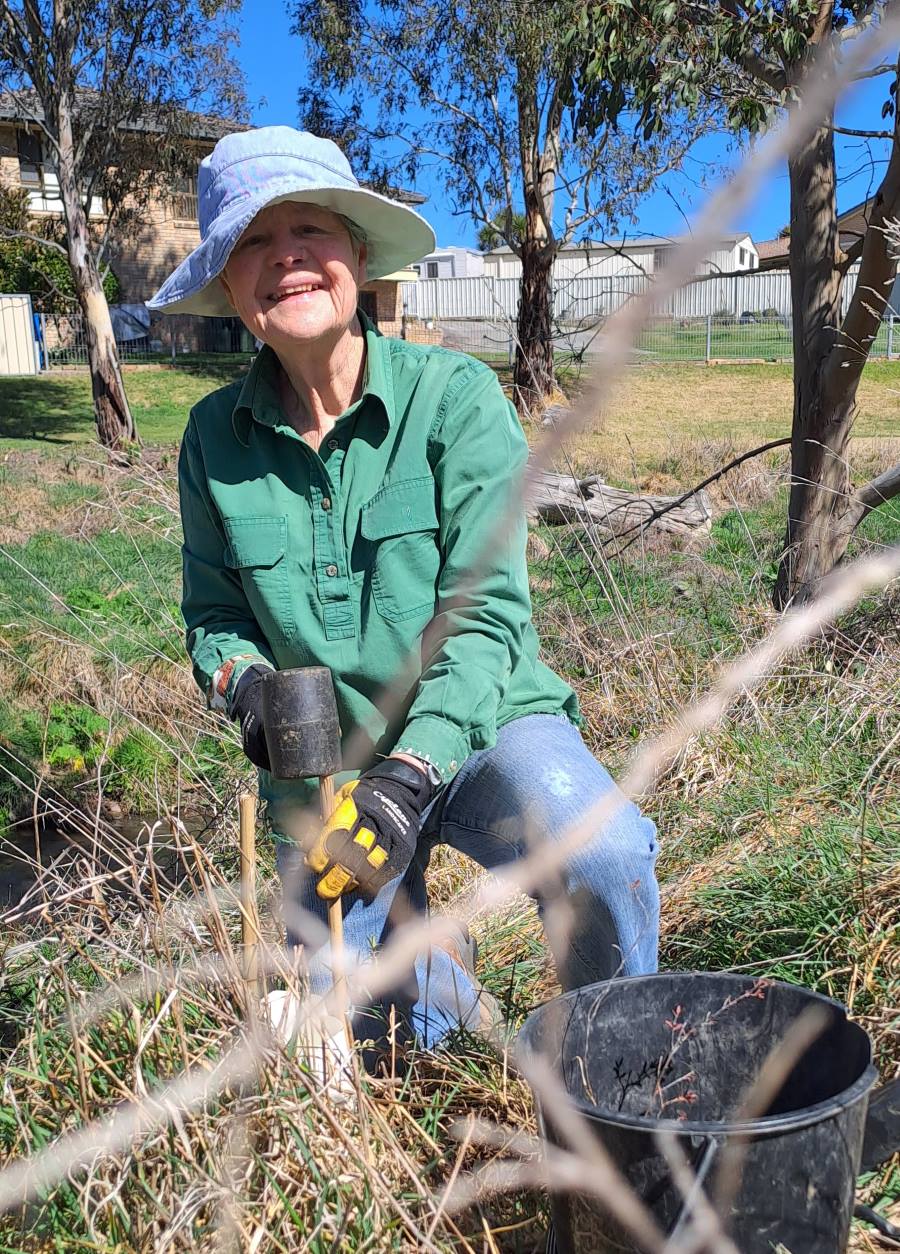
Christine Bailey, hammering in tree guards.
I stop to check on the ‘hole to tubestock’ count, as the tub of tubestock is beginning to look a little bare. Greer Ashworth, one of the waterers, has lived in Lithgow most of her life and has been volunteering with Landcare for several years. I take time to check in with her too:
As 12.30 arrives, I look back over the area we have planted. After less than three hours, two hundred tubestock punctuate the creek bank, helping to stabilise 130 metres of degraded land, creating habitat for our native fauna and shade for walkers and cyclists on the nearby pathway. Perhaps one day I will sit under the shade of a towering Eucalypt as a flock of Gang Gangs soar overhead, but if not, well I am hopeful my children will.
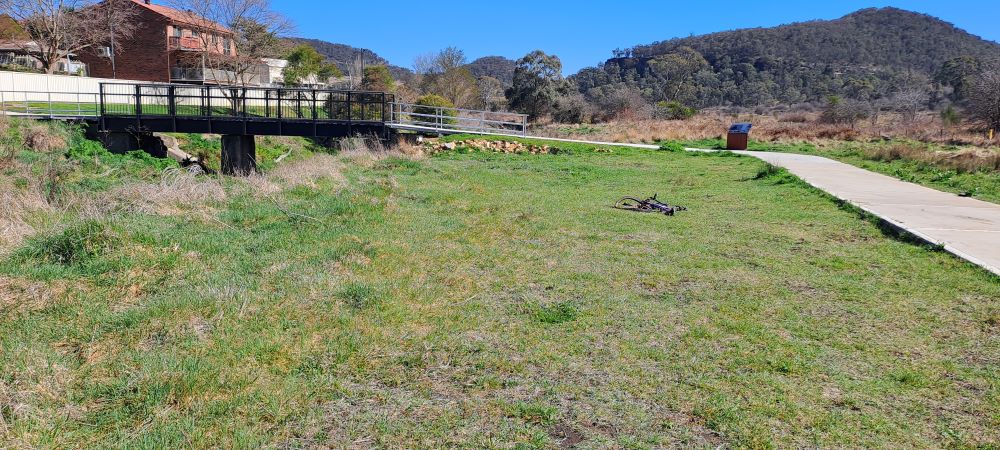
Before: Pre-planting: The creek bank when it was bare, save for an abandoned bike.
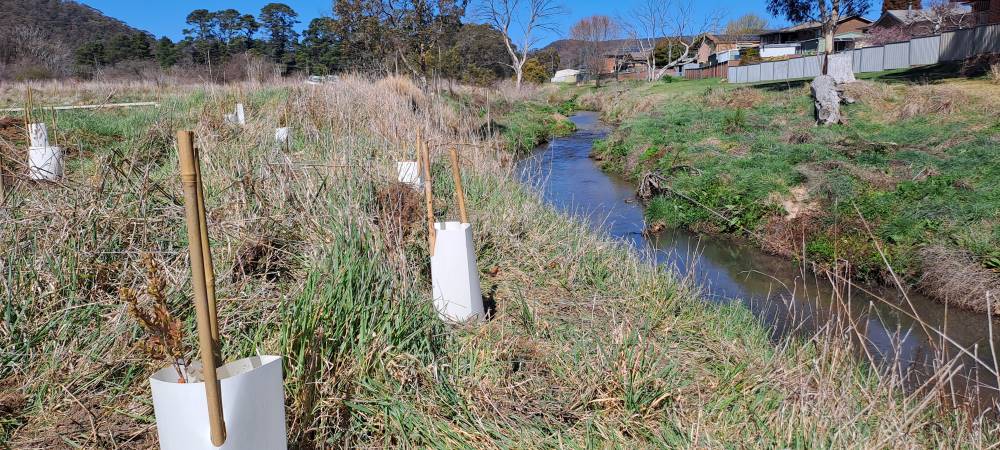
After: Post planting: 200 mixed species have been planted to create layered habitat for Gang Gang Cockatoos and other species.
Take Action:
- Participate in a Landcare event. Steve Fleischmann, Landcare Coordinator, Lithgow & Oberon Landcare Association can be contacted on 0419 795 781 or steven.fleischmann@lithgow.nsw.gov.au for details of future events and to subscribe to their newsletter.
- Plant habitat in your own backyard. Lithgow and District Community Nursery can provide advice and tubestock. Open Saturday 9-1 pm and Friday and Monday 8.30-3.30 pm. 2A Coalbrook Street Lithgow.
- Learn more about Threatened Species Day at https://wwf.org.au/what-we-do/species/national-threatened-species-day/
